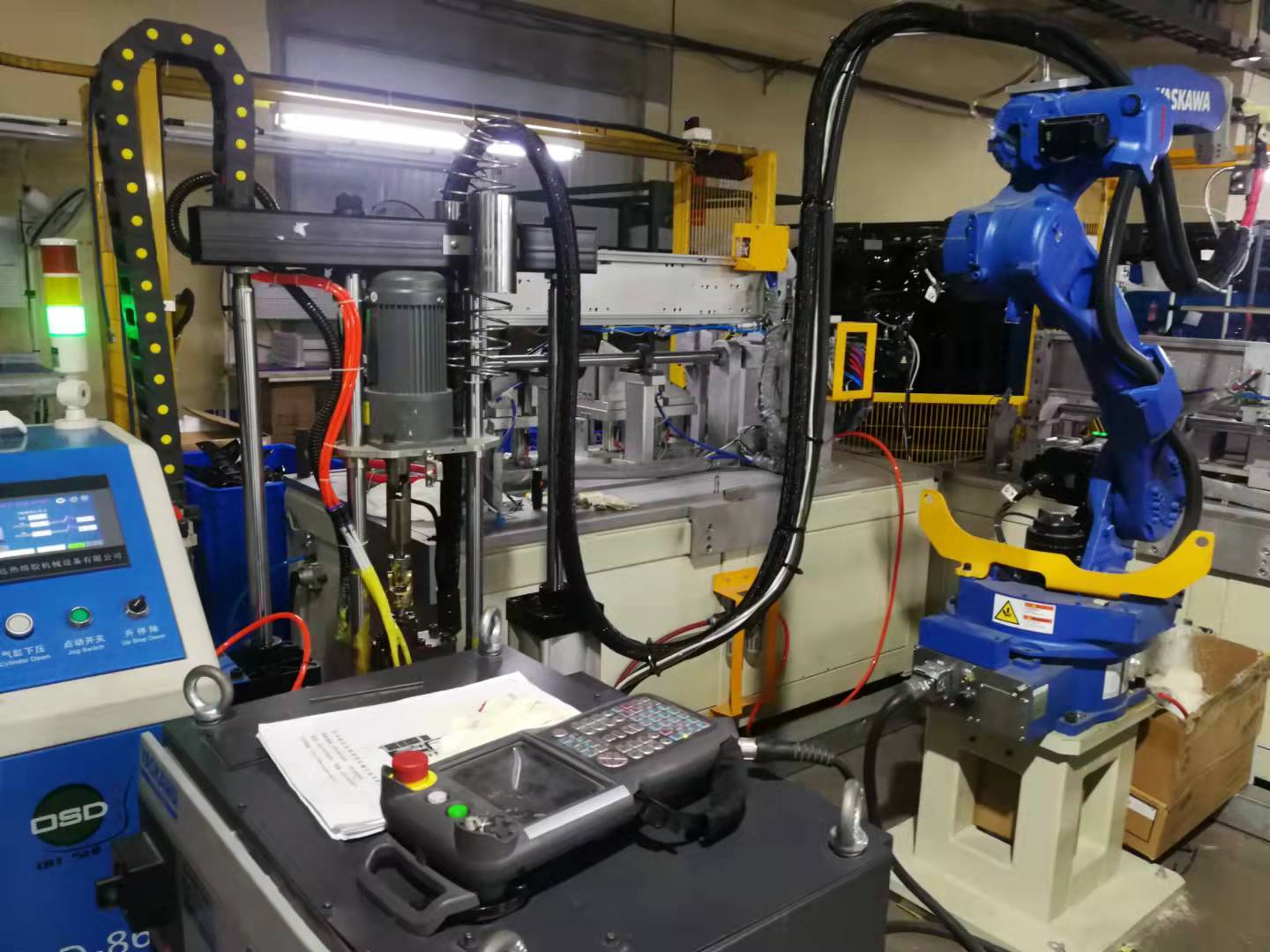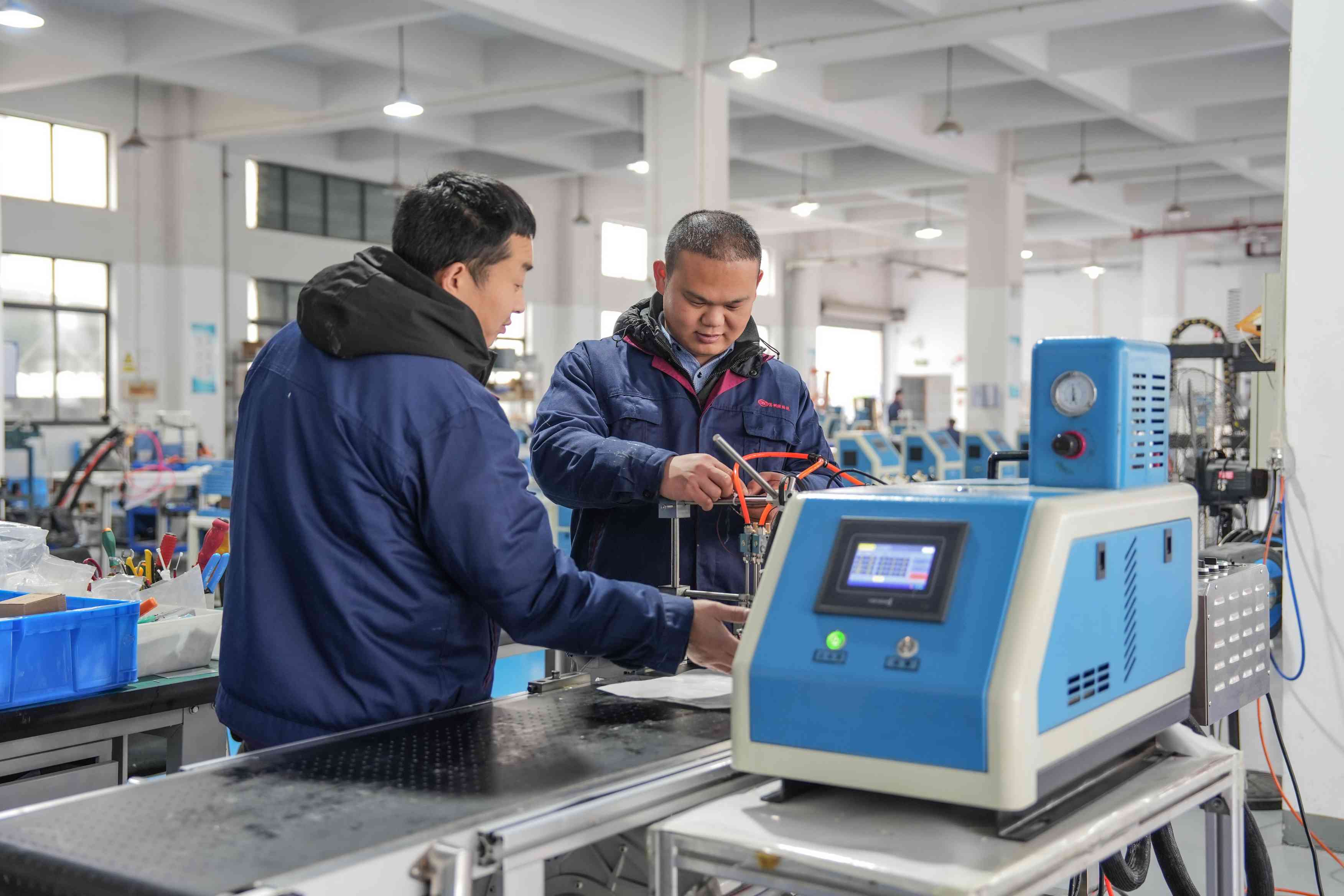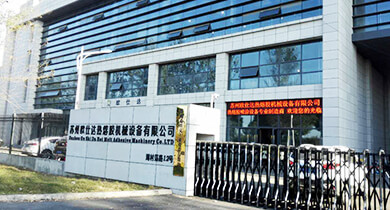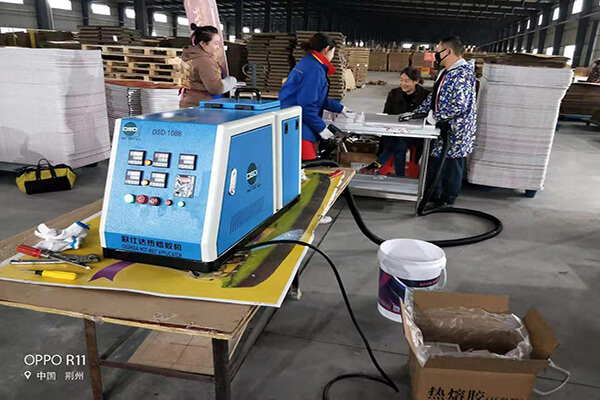Suzhou Oushida Hot Melt Machinery Equipment Co., Ltd.
18 years of experience in R&D and production of hot melt adhesive spraying equipment and automation equipment
18 years of experience in R&D and production of hot melt adhesive spraying equipment and automation equipment



In the actual production of hot melt adhesive spraying machines, in order to increase the retention of fillers and improve the wet strength and water filtration of paper, some cationic additives (mostly polymer electrolytes) such as polyethyleneimine (Polyethylene-imine (PEI) and Cationic Starches. In this way, these cationic additives will react with certain negatively charged pollutant particles in the system, and they can also react with certain dissolved substances to generate electrostatic instability (static instability involves electric double layers, charge and adsorption theory, etc.).

Due to electrostatic instability, the original balance of gravitational and repulsive forces between the hot-melt adhesive particles is destroyed, making them easy to coalesce with each other to form large particles, and the deposition tendency is greatly increased. The size of the deposition trend is related to the chemical properties of the hot-melt adhesive, the chemical composition of the cationic additive, the fluid shear force, and the surface properties of the equipment.
The utility model discloses a static electricity removing device on a hot melt adhesive compounding machine, which includes a static electricity removing device. The static elimination device on the hot-melt adhesive laminating machine, through the static elimination brush installed inside the static elimination tank, can make the fabric dusted with rubber powder difficult to generate static electricity, ensure the quality of the two fabrics pasted, and can be shockproof and stable. High performance, detachable, dust removal, simple structure, reasonable design, convenient operation and easy to popularize.
1. Improve the grounding method.
2. Check if the machine is leaking! Troubleshoot non-static faults!
3. Eliminate static electricity, buy or make an air humidifier! (Dry air is also one of the bane of static electricity!)
4. Installation of "static eliminator" works well, such as textile machinery. Using AC power, the appearance is like the voltage regulator in the home. There are two tubes with wires installed in the location where static electricity is needed.
The static protection of the hot melt spray equipment is generally achieved by the elimination of electromagnetic fields, the shielding of high static parts, and the grounding of the machine. The simplest method is the machine grounding method, which can use a metal wire to ground the machine casing to eliminate static electricity.
When the indoor air humidity is lower than 30%, the machine is extremely susceptible to friction and generates static electricity. In order to prevent the occurrence of static electricity, it is necessary to maintain a certain humidity in the room, and the relative humidity of the environment is preferably not less than 50%. The specific methods include mopping the floor, spraying water, or humidifying with a humidifier.
In addition, eliminating static electricity from the machine can also start from the overall production environment, for example, anti-static flooring, floor mats, all tools involved in production use anti-static products as much as possible, so that static electricity will not be eliminated.
1. Formulate control plans according to production;
2. Staff training;
3. Infrastructure and protective products;
4. Supervision of program implementation, inspection and monitoring of facilities and protection;